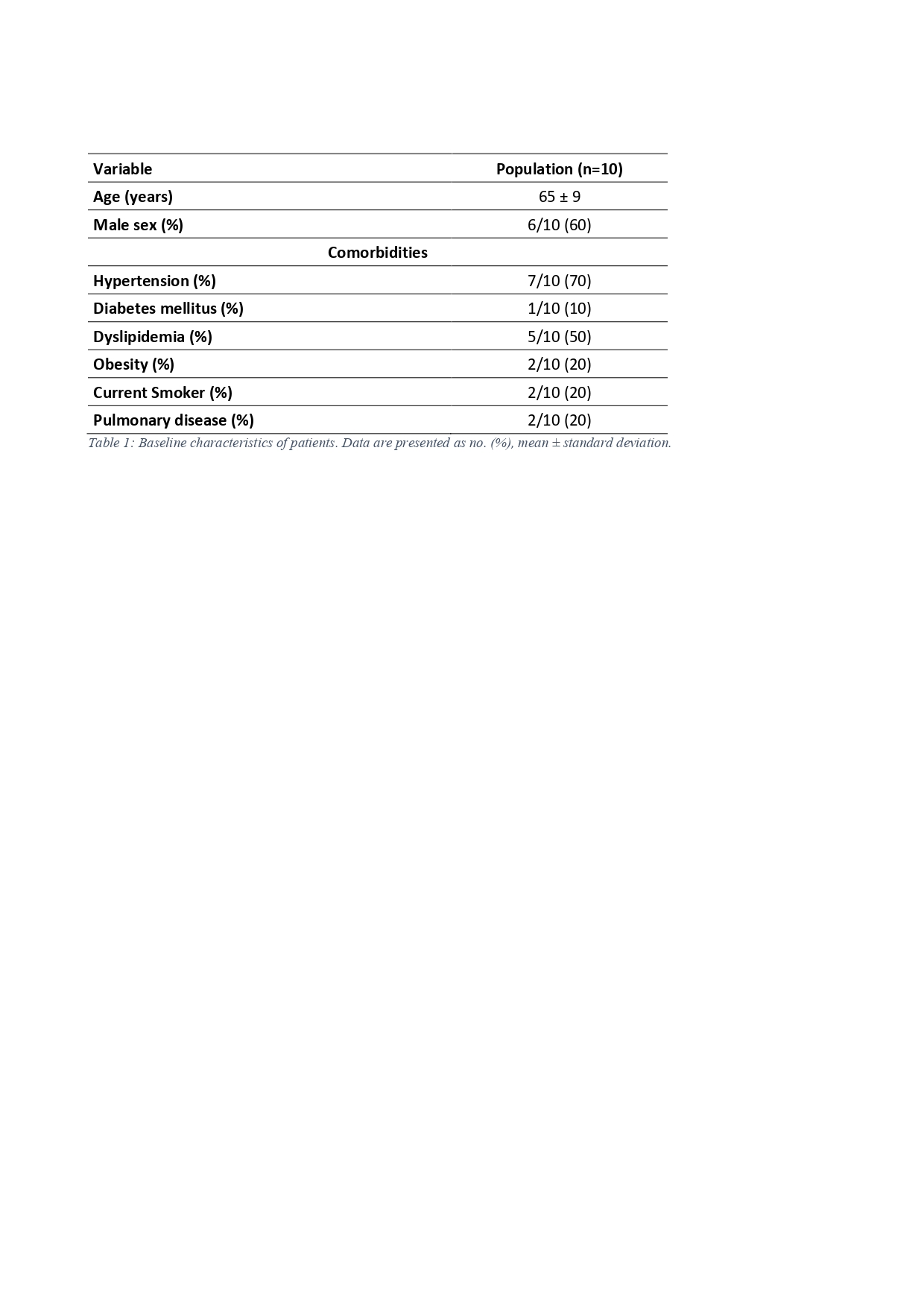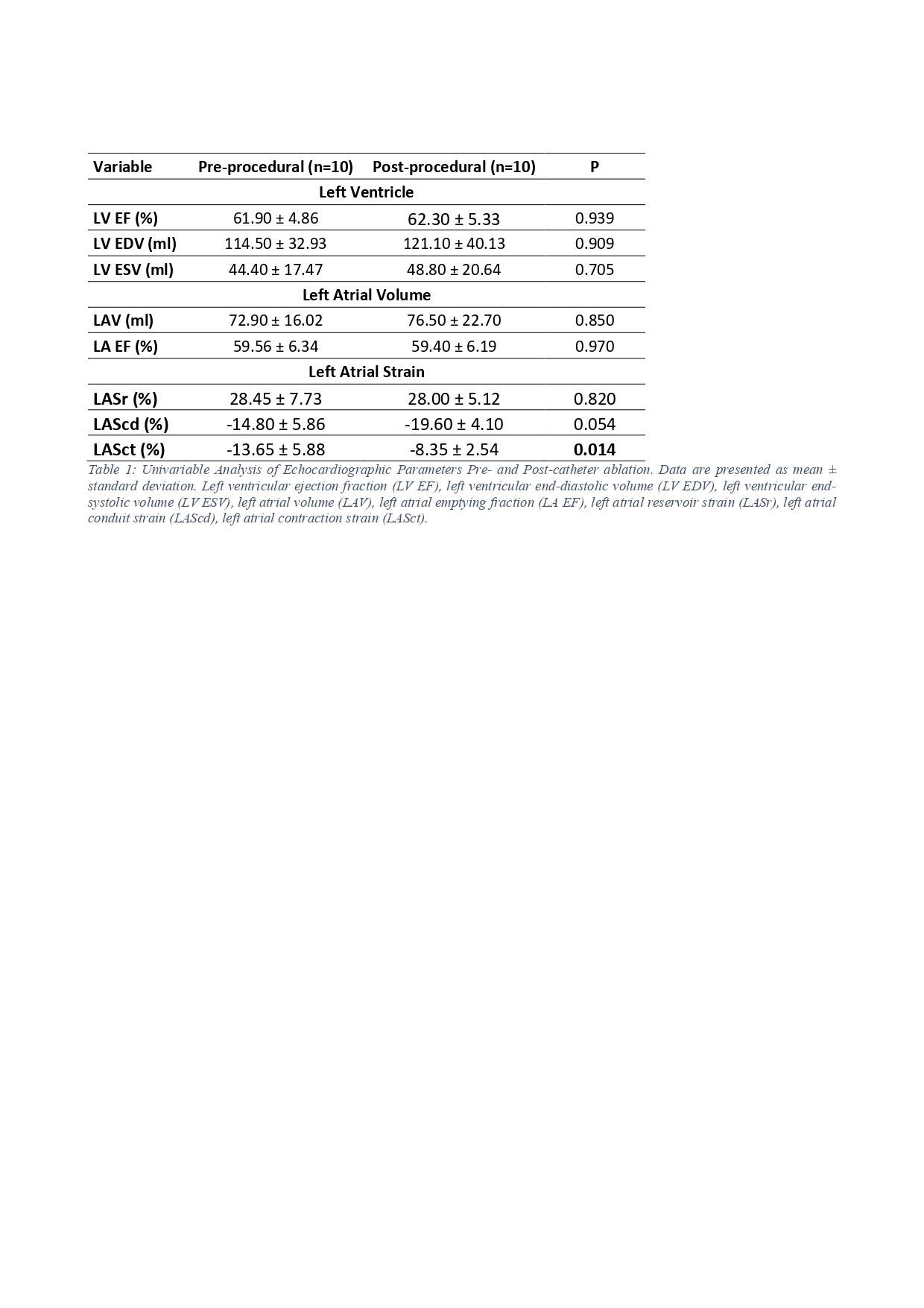Background and purpose: Atrial fibrillation (AF) has a progressive nature, leading to structural, functional, and electrical changes in the left atrium (LA). The effect of catheter ablation (CA) on LA volume and function in patients with paroxysmal atrial fibrillation (PAF) has not been extensively investigated. This study aimed to assess the early effects of this procedure on LA contractile function. Methods: Ten patients with PAF (Table 1: baseline characteristics) scheduled for CA were prospectively enrolled. All patients were in sinus rhythm and underwent pulmonary vein and left atrial posterior wall isolation. Pulsed-field ablation (PFA) was performed in nine cases, whereas High-Power Short-Duration Radiofrequency (HPSD RF) was employed in one case. Transthoracic echocardiography (TTE) was performed one day before and one day after CA. The echocardiographic analysis included measurements of left atrial emptying fraction (LAEF) and left atrial strain (LAS) during reservoir (LASr), conduit (LAScd), and contraction phases (LASct). Speckle-tracking imaging with LAS analysis was performed using the GE Q-analysis application (GE Vivid E80). Results: A comparison of the baseline and post-procedure measurements showed no significant changes in LA volume (LAV: 72.9±16.0 vs. 76.5±22.7, p=0.850), LAEF (59.56±6.3 vs. 59.40±6.2, p=0.970), LASr (28.45±7.73 vs. 28.00±5.12, p=0.820), and LAScd (-14.80±5.86 vs. -19.60±4.10, p=0.054). However, LASct significantly decreased following CA (-13.65±5.88 vs. -8.35±2.54, p=0.014) (Table 2). Conclusion: LAS may be a useful index to evaluate dynamic changes of LA function induced by CA. After CA, only LASct significantly decreased. These findings suggest that CA may have an early impact on left atrial contractile function while preserving atrial volume and global function. Larger studies with extended follow-up are required to validate these results and assess their long-term clinical implications.


